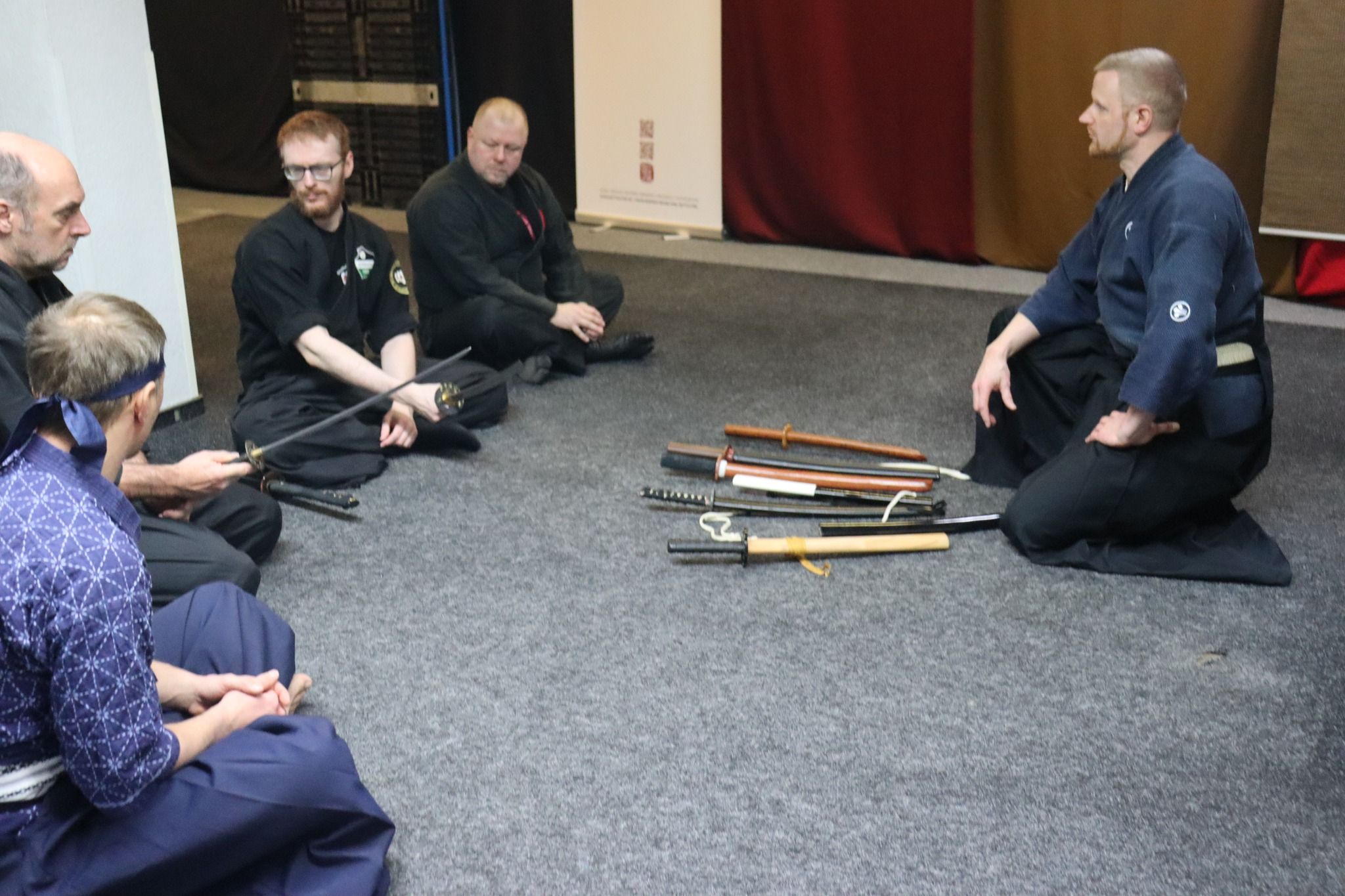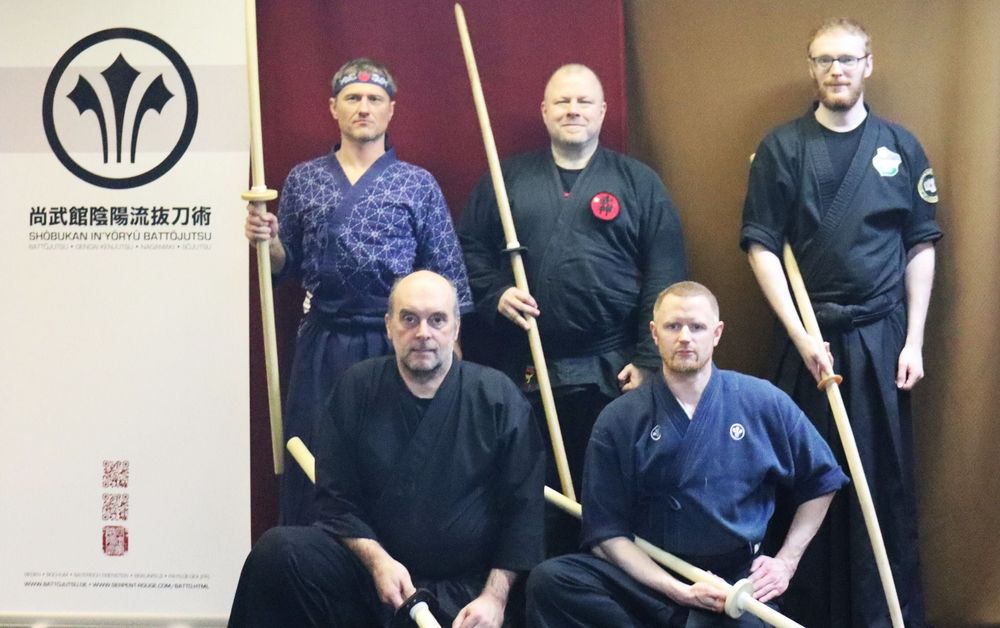On Sunday, 16.02.25, a Shobukan Inyo-Ryu Battojutsu course on Nagamaki, Ôdachi and Wakizashi took place in Bochum under the direction of Benedikt Schwarz, 2nd Dan.
As usual in Bochum, Benedikt Schwarz started the course with a theoretical part. The weapons (Nagamaki, Ôdachi and Wakizashi) were presented in their various forms. The various advantages and disadvantages were discussed, as well as the differences between steel and wooden weapons. The wooden weapons do not always correspond exactly to their steel counterparts. Then it was time for practice. First, the handling of the respective weapons was demonstrated and practiced individually. The participants were then able to use the weapons (in this case wooden weapons, of course) in partner training and try out various techniques.

What exactly are Nagamaki, Ôdachi and Wakizashi?
Ôdachi - the warrior's blade
The Ôdachi (also known as Nodachi ) is an impressive Japanese sword with a blade length of over 90 cm - sometimes even much longer. Originally intended for use on open battlefields, it was the weapon of heavily armored foot soldiers(ashigaru) or warriors who wanted to deliver large, powerful blows from a distance. Due to its length and weight, the Ôdachi was rarely worn on the belt - instead often carried on the back or by a servant for battle. In modern martial arts, the Ôdachi is above all a symbol of strength, technique and body control, as wielding this weapon requires exceptional training and precise control.
Nagamaki - the elegant hybrid form
The nagamaki is a fascinating hybrid between a sword and a pole weapon. It has a similarly long blade to the katana or Ôdachi, but is characterized by its particularly long handle - often almost as long as the blade itself. This design enables powerful cuts and simultaneous control over distance. In contrast to the naginata, where the handle clearly predominates, the nagamaki is better balanced and is wielded with a characteristic two-handed grip style. In the history of Japan, the nagamaki was particularly valued by equestrian units as it combined reach and maneuverability.
Wakizashi - the soul of the samurai
The wakizashi is the smaller companion sword to the katana and was an integral part of a samurai's equipment. With a blade length of around 30 to 60 cm, it was versatile - both in close combat and inside buildings, where longer weapons were impractical. It also served as a weapon of honor and was used in ritual ceremonies such as seppuku. Together with the katana, it formed the Daishō set- a symbol of the wearer's social status and honor. In today's martial arts, the wakizashi is often used for quick, precise cuts and for practicing complex techniques.
Differences between Ôdachi and Nagamaki
At first glance, Ôdachi and Nagamaki look similar - both are long, impressive weapons with a long reach. However, there are clear differences in their construction and use: The Ôdachi is basically an overlong sword with traditional grip proportions, designed primarily for large, cutting movements in open combat. It is wielded like a katana, but requires much more strength and space. The nagamaki, on the other hand, has a significantly longer handle, which makes up almost half of its overall length. This makes its handling more reminiscent of a pole weapon and allows for controlled leverage techniques, similar to the bō or naginata. While the Ôdachi favors the direct, powerful strike, the nagamaki allows for more variation and control - especially in more confined situations or from horseback. In martial arts, the nagamaki thus represents a link between swordsmanship and polearm techniques.
